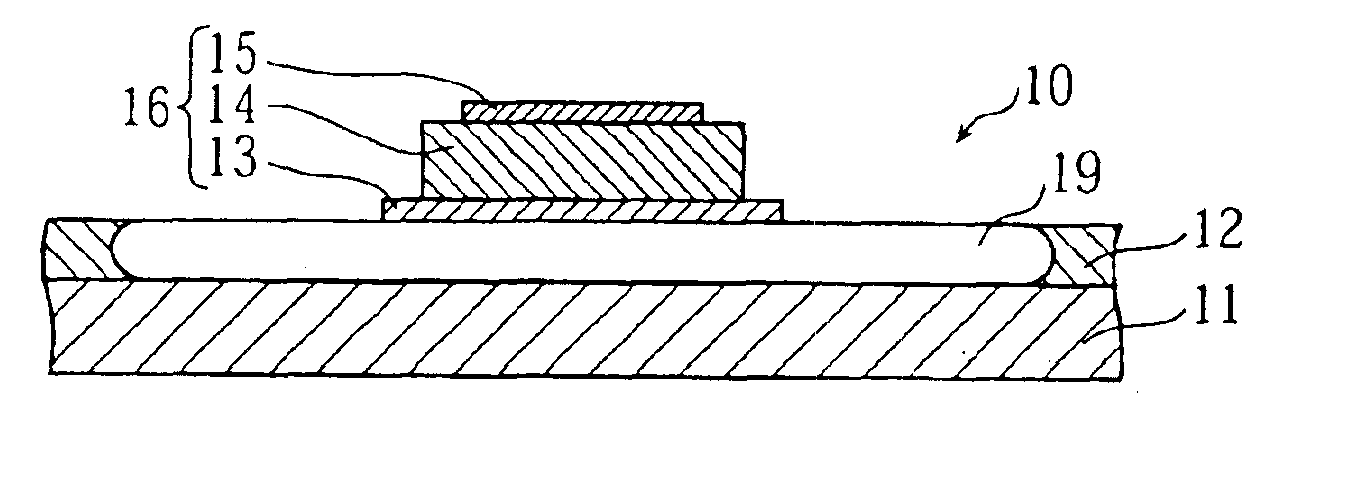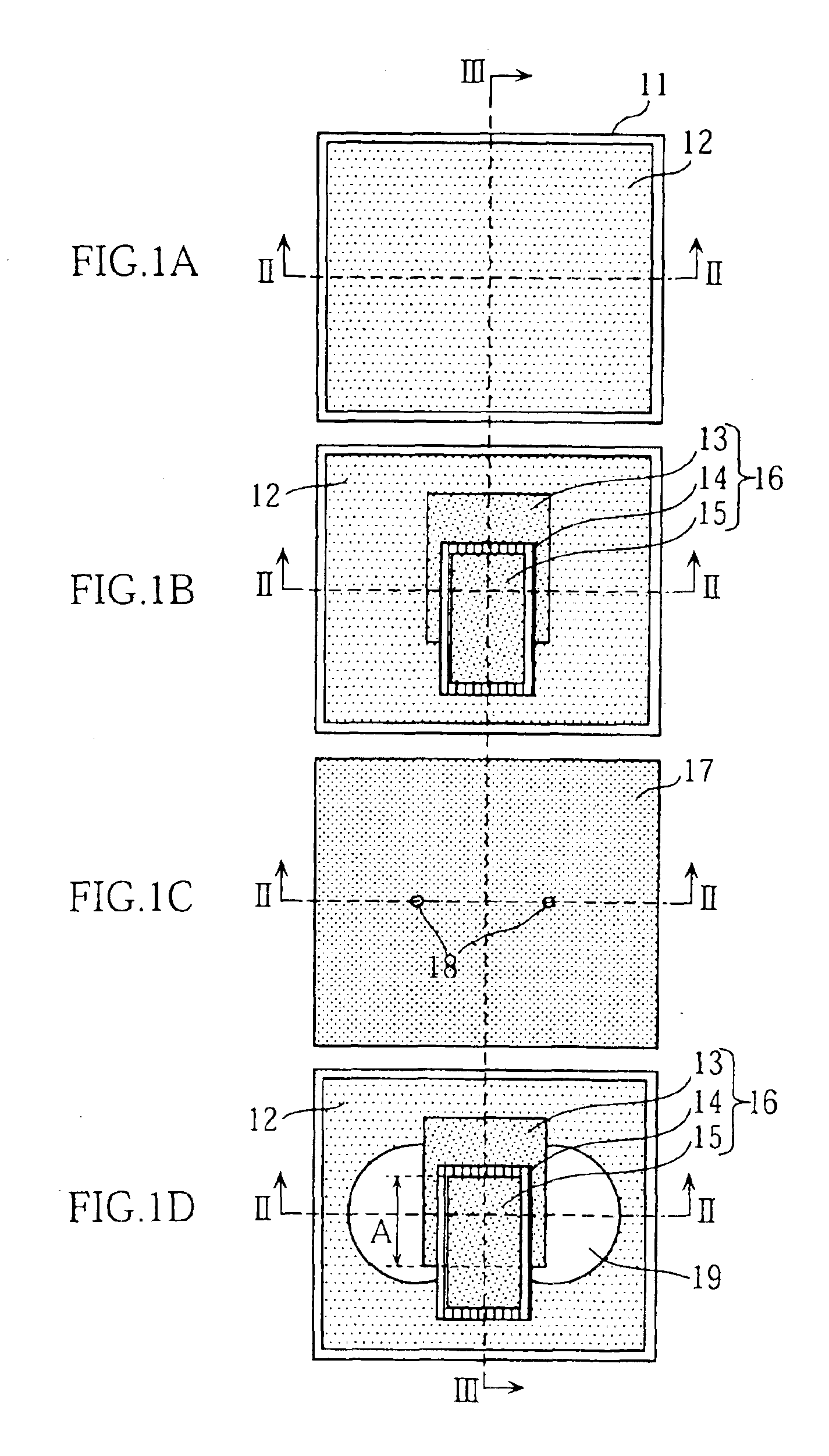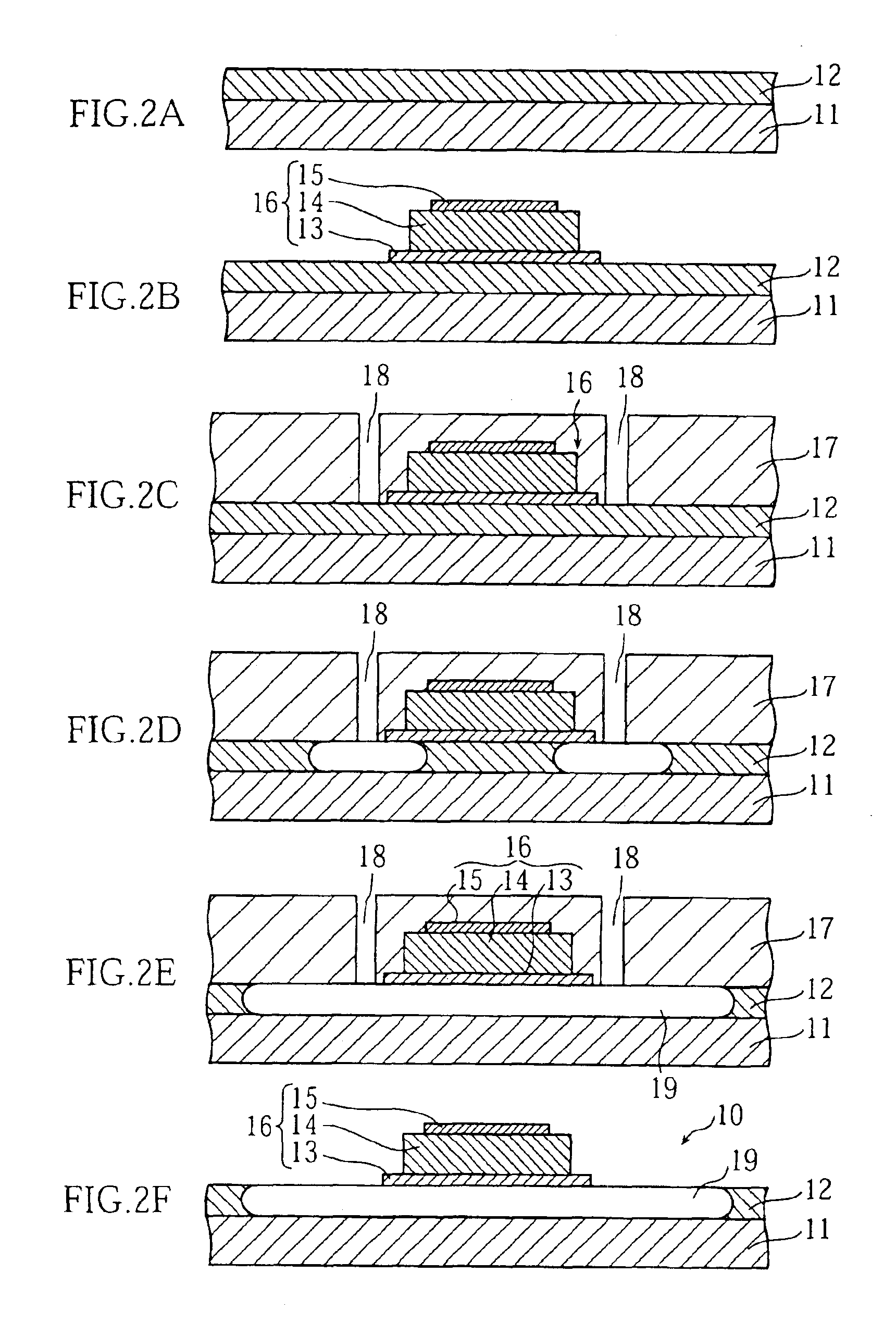Film bulk acoustic resonator
- Summary
- Abstract
- Description
- Claims
- Application Information
AI Technical Summary
Benefits of technology
Problems solved by technology
Method used
Image
Examples
first embodiment
[0039]Reference is first made to FIGS. 1A-1D, 2A-2F and 3A-3F to describe an FBAR (Film Bulk Acoustic Resonator) fabrication method according to the present invention. As noted above, FIGS. 1 are plan views, FIGS. 2 are sectional views taken along lines II—II in FIGS. 1, and FIGS. 3 are sectional views taken along lines III—III in FIGS. 1.
[0040]In accordance with the method, first, a base layer 12 is formed on a silicon substrate 11, as shown in FIGS. 1A, 2A and 3A. The base layer 12 has a thickness of 5 μm and is made of an insulating material such as magnesium oxide using a known sputtering for example. Of course, the present invention is not limited to this. For instance, the thickness of the base layer 12 may be varied in a range of 1-50 μm. The insulating material, other than magnesium oxide, may be silicon dioxide, zinc oxide, PSG (phosphorus-added silicon glass), BSG (boron-added silicon glass), BPSG (boron,phosphorus-added silicon glass), or SOG (spin-on glass).
[0041]Then, a...
second embodiment
[0048]Reference is now made to FIGS. 4A-4D, 5A-5F and 6A-6F to describe an FBAR fabrication method according to the present invention. Of these figures, FIGS. 4 are plan views, FIGS. 5 are sectional views taken along lines V—V in FIGS. 4, and FIGS. 6 are sectional views taken along lines VI—VI in FIGS. 4.
[0049]In accordance with the second embodiment, an FBAR is fabricated in the following manner. First, as shown in FIGS. 4A, 5A and 6A, a base layer 22 and a sacrificial layer 22′ are formed on a silicon substrate 21. Specifically, the base layer 22 may be made of silicon dioxide by plasma CVD (chemical vapor deposition) to have a thickness of 5 μm. Then, a magnesium oxide layer having a thickness of 10 nm is made on the base layer 22 by electron beam deposition for example. This MgO layer is processed into the sacrificial layer 22′ by photolithography and wet etching (or dry etching). For wet etching, the etchant may be acetic acid solution. In the illustrated embodiment, the sacrif...
fifth embodiment
[0061]FIGS. 9A-9F show the steps of an FBAR fabrication method according to the present invention. FIGS. 10A-10F are sectional views taken along lines X—X in FIGS. 9A-9F, while FIGS. 11A-11F are sectional views taken along lines XI—XI in FIGS. 9A-9F.
[0062]In accordance with the fifth embodiment, a base layer 52 and a sacrificial layer 52′ are formed on a silicon substrate 51, as shown in FIGS. 9A, 10A and 11A. Specifically, the base layer 52 is formed by providing a 5 μm-thick silicon oxide layer on the silicon substrate 51 by plasma CVD for example. Then, a 10 μm-thick magnesium oxide layer is formed on the base layer 52. Thereafter, the magnesium oxide layer is processed into the desired sacrificial layer 52′ by photolithography and wet (or dry) etching. For wet etching, the etchant may be acetic acid solution. In this embodiment, the sacrificial layer 52′ includes one first island 52′a and two second islands 52′b connected to the first island by connection strips 52′c. The sacrif...
PUM
 Login to View More
Login to View More Abstract
Description
Claims
Application Information
 Login to View More
Login to View More - R&D
- Intellectual Property
- Life Sciences
- Materials
- Tech Scout
- Unparalleled Data Quality
- Higher Quality Content
- 60% Fewer Hallucinations
Browse by: Latest US Patents, China's latest patents, Technical Efficacy Thesaurus, Application Domain, Technology Topic, Popular Technical Reports.
© 2025 PatSnap. All rights reserved.Legal|Privacy policy|Modern Slavery Act Transparency Statement|Sitemap|About US| Contact US: help@patsnap.com



